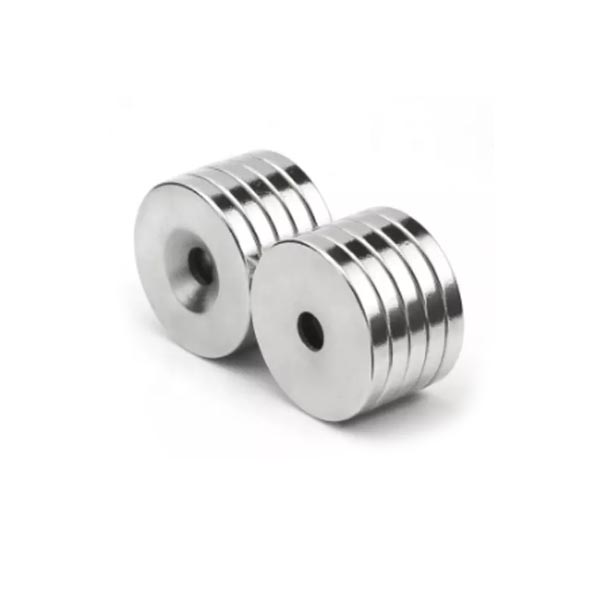The field of robotics is evolving at an incredible pace, with breakthroughs in artificial intelligence, sensor technology, and materials science driving innovation. Among the less obvious yet crucial advancements are custom neodymium magnets, which play a significant role in enhancing the functionality, efficiency, and versatility of modern robots. These powerful magnets are enabling engineers to push the boundaries of what robots can achieve, from precision tasks in manufacturing to advanced medical applications.
1. The Power of Neodymium Magnets
Neodymium magnets, also known as rare-earth magnets, are the most powerful type of permanent magnet available. They are made from an alloy of neodymium, iron, and boron (NdFeB) and can generate magnetic fields far stronger than traditional magnets. This makes them ideal for robotic applications where strong, reliable magnetic fields are required in compact spaces.
For example, in robotic actuators, which are responsible for movement and control, neodymium magnets can generate the necessary force and precision for smooth motion, enabling robots to handle delicate tasks such as assembling tiny electronic components or performing intricate surgical procedures.
2. Customization for Specific Robotic Applications
While standard neodymium magnets are impressive, custom designs are even more critical in robotics. Custom neodymium magnets can be tailored to specific sizes, shapes, and magnetic strengths, allowing engineers to optimize the magnet for its intended use.
- Shape and Size: In robotics, space is often a limiting factor, especially in small-scale robots like drones or medical devices. Custom neodymium magnets can be designed as discs, blocks, rings, or even more complex geometries, fitting perfectly into the robotic components without compromising on performance.
- Magnetic Strength: Different robotic systems require varying levels of magnetic force. Custom magnets can be fine-tuned to achieve the exact strength needed for the task, whether it's a strong magnetic field for lifting heavy objects in an industrial setting or a weaker field for precise positioning in medical robotics.
- Coating and Resistance: Robotics often operate in harsh environments, including exposure to moisture, chemicals, or extreme temperatures. Custom neodymium magnets can be coated with materials like nickel, zinc, or epoxy to enhance corrosion resistance and longevity, ensuring reliable performance over time.
3. Enhancing Robotic Mobility and Precision
One of the most significant areas where custom neodymium magnets are shaping robotics is in enhancing mobility and precision. In autonomous robots, precise movement and accurate positioning are crucial, and magnets play a vital role in achieving these goals.
- Magnetic Sensors and Encoders: Many robots rely on magnetic encoders to determine the position, speed, and direction of their movements. Custom neodymium magnets are used in these encoders to provide the necessary magnetic fields that interact with sensors, allowing for highly accurate feedback and control. This is particularly important in robotic arms, drones, and mobile robots, where even slight deviations in movement can lead to errors.
- Magnetic Levitation (Maglev) Technology: In advanced robotic systems, magnetic levitation is being explored to reduce friction and wear. Neodymium magnets are essential in creating the magnetic fields that enable objects to float and move without physical contact, which could revolutionize robotic transportation systems or high-speed conveyor technologies in manufacturing.
4. Supporting the Miniaturization of Robotics
As robots continue to shrink in size while growing in capability, the need for compact, high-performance components has become more pressing. Miniature neodymium magnets are essential in this miniaturization trend. For example, microrobots used in medical applications, such as targeted drug delivery or minimally invasive surgeries, rely on the strong magnetic fields provided by tiny custom magnets to maneuver through the human body with precision.
Furthermore, as robotic systems become smaller and more agile, the role of custom neodymium magnets in reducing energy consumption and optimizing efficiency is crucial, particularly in battery-powered systems like robotic prosthetics and wearable robots.
5. Future Trends: Neodymium Magnets in Soft Robotics
The next frontier for custom neodymium magnets in robotics is likely to be soft robotics, an emerging field that focuses on creating flexible, deformable robots. These robots are designed to mimic biological organisms, allowing them to perform tasks in unpredictable and unstructured environments, such as search-and-rescue missions or underwater exploration.
Neodymium magnets are being explored for their role in soft actuators, which can generate smooth, flexible movements. Custom magnets are key to fine-tuning the responsiveness of these actuators, giving soft robots the ability to handle delicate or irregular objects that traditional rigid robots cannot.
Conclusion
Custom neodymium magnets are quietly revolutionizing the field of robotics, providing engineers with the tools to create more efficient, powerful, and precise robotic systems. As robots continue to become more advanced, the role of custom magnets in enabling new capabilities—from magnetic levitation to miniature medical robots—will only grow. In many ways, the future of robotics will be shaped by the strength and versatility of these remarkable magnets.
Your Custom Neodymium Magnets Project
We can offer the OEM/ODM services of our products. The product can be customized according to your personalized requirements, including the size, Shape, performance, and coating. please offer your design documents or tell us your ideas and our R&D team will do the rest.
Post time: Oct-24-2024







